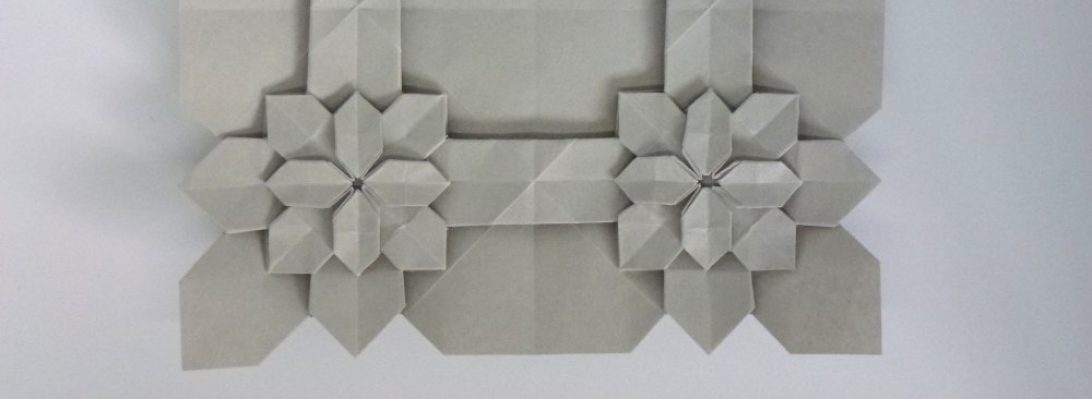David Huffman is a bit of an origami enigma it seems – he pioneered a bunch of tessellations and surface corrugations and seems to be one of the first to explore curved creases and their bizarre effects on flat sheets:
This is is “Arches” tessellation, an intriguing offset brick valley folded grid that then has parabolic mountain folds at each intersection. The resultant sheet is really hard to tidily collapse (in my experience) – perhaps it was the paper or the scoring technique I used to form the parabolas, or perhaps it was the parabola itself – with no guidelines I just sort of guessed a curve.
You get a sort of waterbomb base forcing one trough deep into the arch of an adjacent fold – when it is tidied up it is fascinating – I could see uses for this as an interesting textural pattern or ambient light panel as it makes funky patterns when backlit. Continue reading





